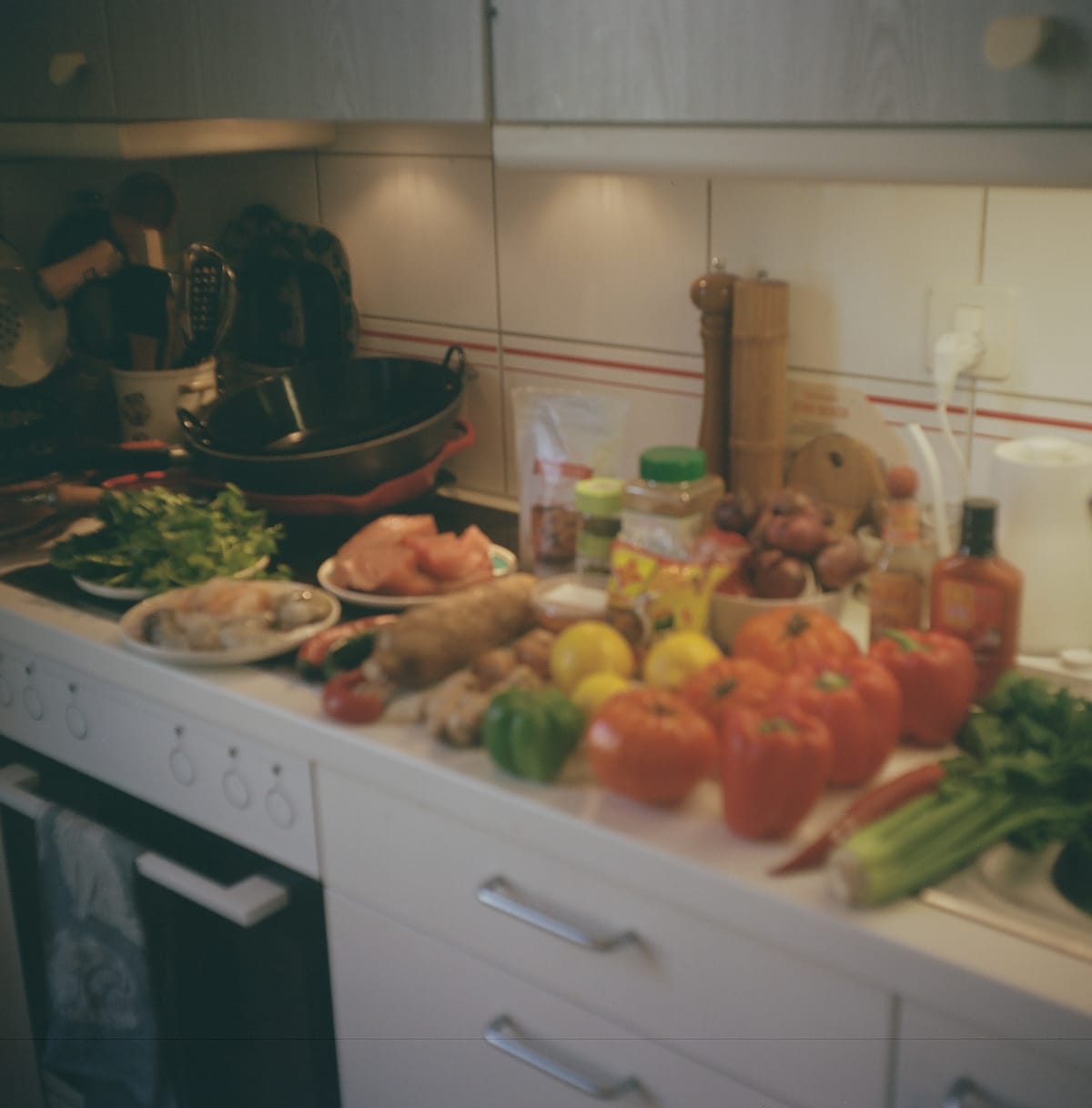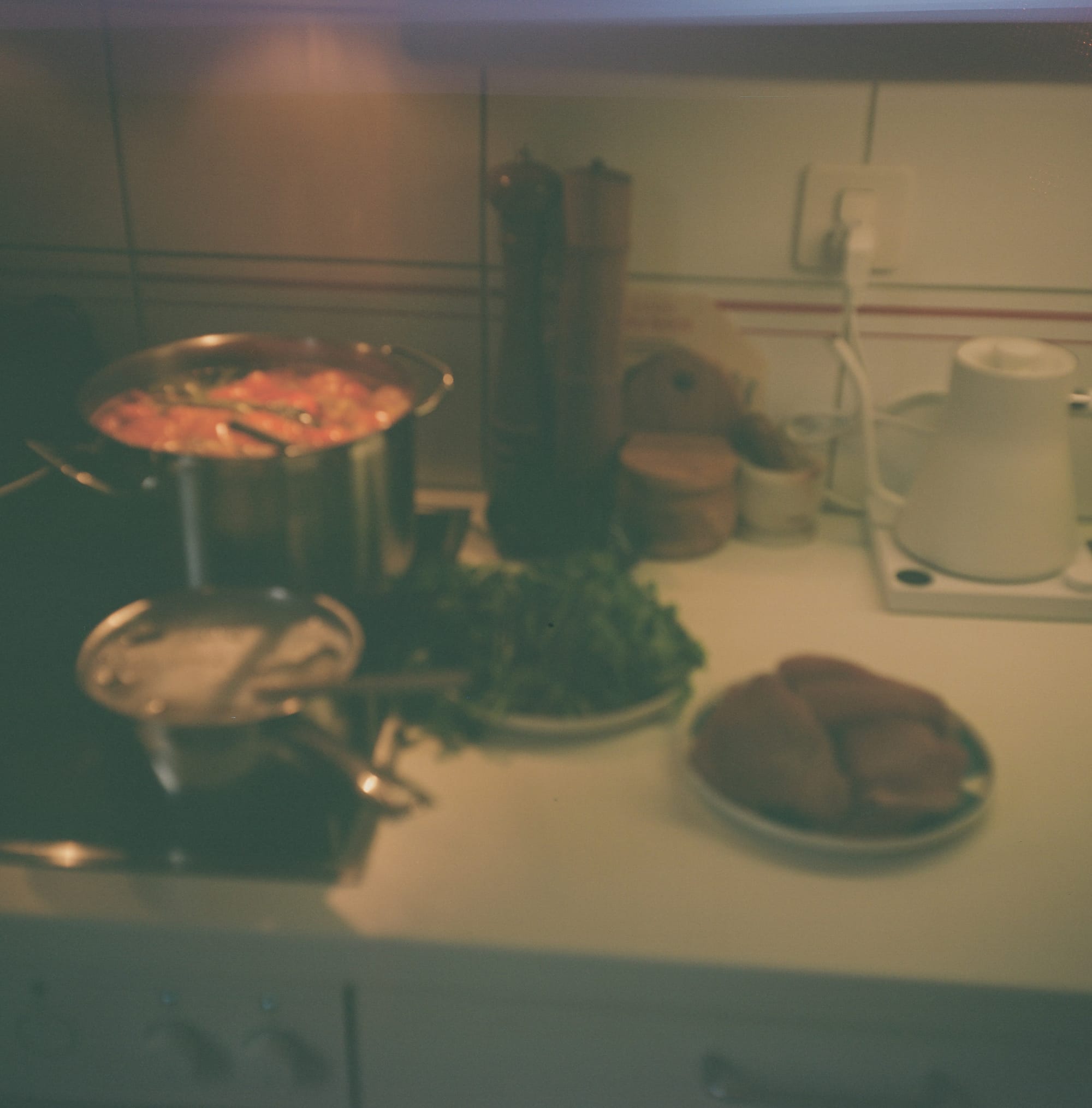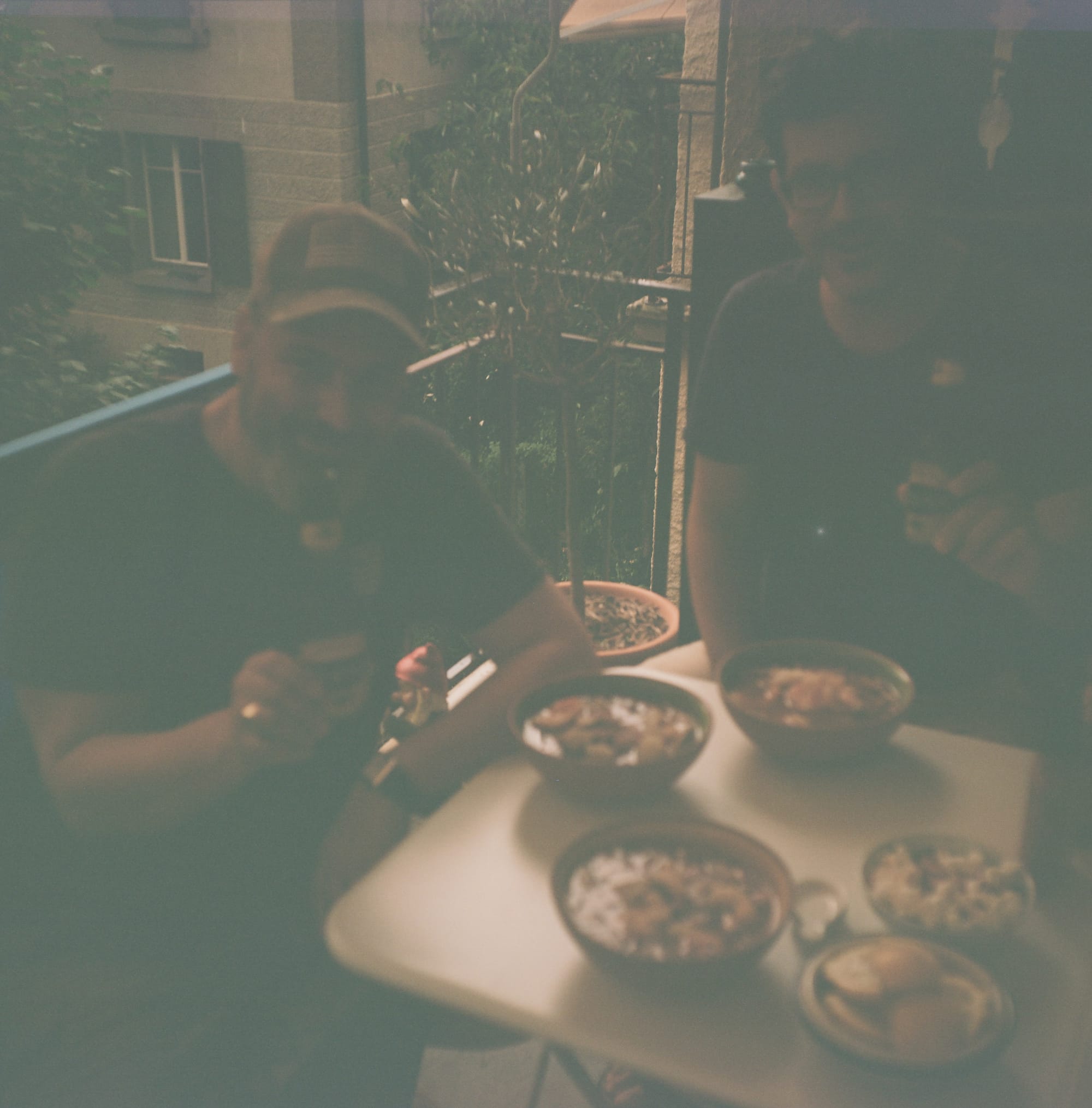What to eat ECUADOR 🇪🇨 Encebollado
Little precise is known about its origins, but it is certainly the mix of cultures that one finds in the Americas that has enriched encebollado to the point it is at now: hearty, sweat-the-spice-out filling.

Encebollado
Published October 18, 2024 · by Amanda Rivkin Häsler
Encebollado is a sofrito-based fish stew, curiously named for the pile of red onions that goes on top after it is fully cooked and served. It is a rare dish named not for the protein nor the most luxurious ingredient in it, which would certainly be (ideally) freshly caught Pacific albacore tuna.
In grammatical terms, encebollado is the gerund of the Spanish verb encebollar, literally to make in onions. While onion is an ingredient of the spicy stock that goes into this hearty fish soup rumored to cure everything from a fisherman’s chills to hangovers, there are also tomatoes, peppers, celery, ginger, cilantro and parsley.
Because of the addition of fresh albacore tuna into the stock, encebollado is most popular in the coastal areas of Ecuador, though it is hugely popular throughout the whole country, consumed at various points of the day, served all day long, even for breakfast. Boiled yuca or casava adds an extra heartiness as the stock is served on top and the water from boiling the yuca is combined into the stock.
Little precise is known about its origins, but it is certainly the mix of cultures that one finds in the Americas that has enriched encebollado to the point it is at now: hearty, sweat-the-spice-out filling. The Spanish explorers introduced onions and limes, though both were originally introduced to the Iberian Peninsula during the Arab rule of the caliphate of Al Andalus in the eighth century.

In the Americas, boiled and grilled fish with salt were popular due to the abundance of the Pacific and Atlantic waters. Yuca was also popular but that too was introduced from Africa by the Spanish engaged in the trade of people and goods across the Atlantic’s triangle trade route, a euphemism for prosperity at the expense of human dignity during centuries of brutal colonial practice.
Most contemporary sources point to the coastal town of Guayaquil, a port along the Guayas River and a gateway to the Pacific Ocean, though some sources have suggested Spanish sailors were already referencing a similar dish in the eighteenth century. From Guayaquil, the dish quickly gained popularity all over Ecuador and is sold in street stalls as well as on corners.
Regardless of its first appearance, it appears to have evolved as a means to deal with the abundance of albacore tuna in the Pacific waters and cure the fisherman’s cold with warmth, heartiness and a bit of spice. Because of the massive supply and affordability of albacore tuna in this part of the Americas, it has been marketed at times as an affordable alternative to ceviche as early as the 1970s.
In 2015, former Ecuadorean President Rafael Correa hosted the first world championship in encebollado. Seeing the dish’s potential as a tourism draw, he marketed the first contest domestically, drawing in some 54 establishments who competed for the title. With 20,000 people present, more than 10,000 bowls of encebollado were served. The winner, Roger Moreira, the owner of Super Encebollado Junior in coastal Esmeraldas, reportedly serves approximately 300 bowls of encebollado in his establishment daily.
A sequel to the contest, held in 2017, the second encebollado world championship, managed to draw in the international Ecuadorean diaspora, with restaurants from New York, seven cities in Spain and three towns in Italy competing. Among the ten finalists, three Ecuadorean immigrants, one each living in the US, Spain and Italy, found themselves among the finalists, with prized bowls of encebollado reportedly judged by a blind vote. The winner, Jonathan Chavez of Pez Azul Express, was of course from Guayaquil.
However, and wherever you encebollado, this hearty fish stew is fabulous for those who like to feel the spice in their meal from head to toe. Garnish with plenty of red onions, but for those who really enjoy the tingle of a good spice, some extra red chili hot sauce can only help the cause of a full body, sensory flavor experience.
¡Buen provecho!

Recipe
Ingredients:
1 small bunch of celery
3 large heirloom tomatoes
3 red bell peppers
1 green bell pepper
2 red peppers
1 green pepper
2 red onions
2 shallots (or 4 cloves of garlic)
1 ginger root
2 cubes of bullion
4 tablespoons cumin
4 tablespoons ground hot pepper
3 tablespoons oregano
500-600 grams of fresh albacore tuna
20 grams of cilantro
20 grams of parsley
200 grams of raw shrimp
Step 1: Wash all the tomatoes, peppers and celery.
Step 2: Chop all the vegetables into half or thirds, removing roots, seeds and stems. Place in a large kettle. Chop onions and garlic after peeling and place in same large kettle. Remove exterior from ginger, cut in smaller pieces and include in the kettle. Fill the kettle with water and place on a high heat until it begins to boil. Turn to medium heat once it begins to boil, primarily so it will not boil over.
Step 3: Remove the skin from the yuca and cut into smaller pieces. Place in a smaller pot of water and place on heat until it begins to boil. Turn to medium heat once it begins to boil, primarily so it will not boil over.
Step 4: Add bullion, cumin, ground hot pepper and oregano to large kettle with vegetables and stir.
Step 5: After half an hour, add tuna, cilantro and basil to the kettle and stir. Turn down the heat slightly. Allow to simmer another 30 minutes.
Step 6: Pull the vegetables from the stock and set aside. Set the tuna aside separately. Repeat this process with the yuca, setting the tuna and yuca aside on a platter. Add the water from the yuca to the remaining stock. Turn off the heat on everything for the time being.
Step 7: Use a food processor or blender and combine vegetables with a bit of stock. Use a strainer afterwards, before combining with stock.
Step 8: Now to prepare the encebollado to serve. Butterfly the shrimp and set aside. Cut one or two red onions very fine depending on size and number of guests. Once plates are assembled, return stock to a boil and add shrimp no more than 2-3 minutes before serving.
Step 9: To assemble: Place yuca and tuna in a bowl, garnishing with sliced red onions. Add stock. Serve with lemon wedges, plantain chips and popcorn on the side. Hot sauce, if desired.
Tips, tricks and notes:
One pro-tip from my mother is putting a wooden spoon in anything boiling, which prevents things from boiling over, though full heat will not be deterred by a wooden spoon alone, vigilance is required!
Also, the smells will be amazing while you are making this dish from start to finish. Brace yourself, especially if you like spicy.
A hot red pepper sauce, homemade or acquired at the store, is a perfect extra for the table, along with an additional pile of finely sliced red onions.
Learn where to eat Ecuadorean food in Switzerland.
Follow our social media pages @swissglobaldining on Instagram, TikTok and YouTube